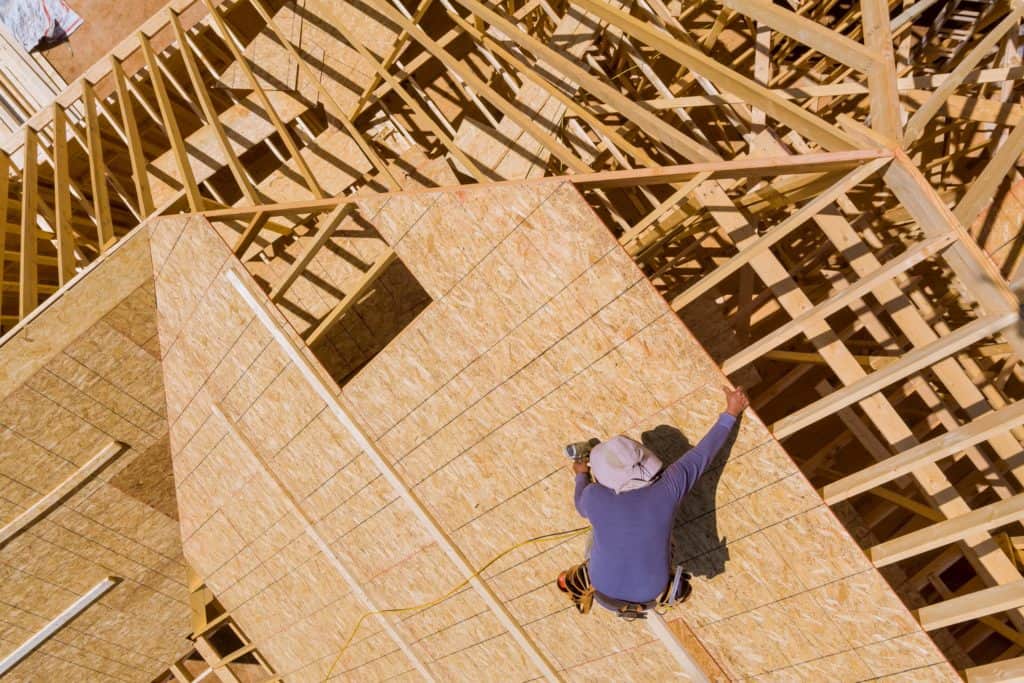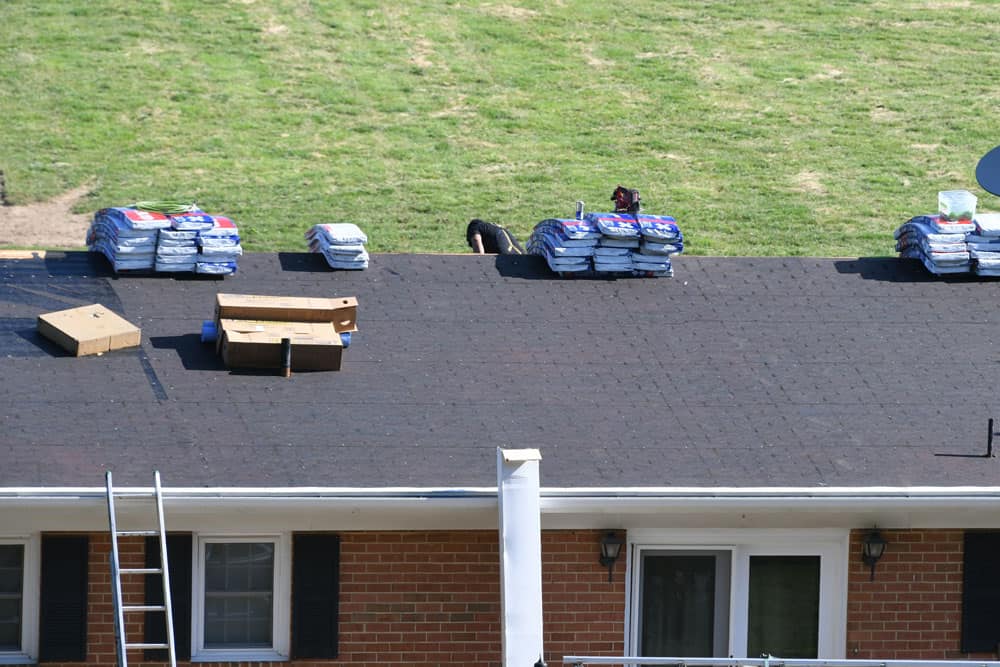Although a roof looks simple, it is a complex system of layers of different materials. Each layer has a specific function, such as absorbing the impact of natural forces or controlling the temperature and humidity inside the home. Together, these layers create a protective barrier that keeps out the elements and enhances the comfort of the people living under it.
Decking
The decking is one of the four components of shingles that support the roof and serves several essential functions. It forms a barrier between the decking and the shingles, absorbs resin released by the decking, and acts as an extra water barrier. It also helps prevent picture framing or bumps on the roof caused by slight expansion and contraction of the panels. In addition, underlayment protects shingles from moisture and provides a barrier against fire.
Decking typically consists of two-by-six boards. They fit together in a groove and lock in place during installation. This material is standard on classic homes and roofs with wood shakes, but it must have proper spacing according to building codes. Nowadays, most people use plywood or OSB sheets for their decking.
If you’re considering replacing your roof’s decking, check for any damage and cracks. Cracks and loose fasteners can cause your decking to pull away from your home. You can also make sure your decking has protection by installing flashing. This waterproofing system protects the ledger board and channels water away from home.
While the deck is a structural component, it can also be an attractive addition to the home. Composite decks are also a good choice. They can be durable and can also be part of a fire-rated assembly. Decking also acts as a form for the concrete and is often used over open-web joists.
Besides shingles, the roof deck is an essential part of the roof. It provides the structural support needed for other roofing materials. It must be solid and durable enough to withstand various conditions and weights. Moreover, it should be able to resist moisture, heat, and wind.
The deck is made from materials such as wood and synthetic materials. Many decking materials are from treated lumber or composite materials. Other materials include aluminum or recycled ink. The lumber used for decking may be Western red cedar or other hardwoods. Some synthetic decking materials consist of plastic or wood-plastic composite materials.

Plywood
Plywood is a very affordable material that is exceptionally water-resistant and structurally sound. This material is a favorite of builders and homeowners alike. Generally, it is used on the outside portions of houses to support the rest of the roofing system. The material is from layers of wood that are glued together. It is essential to choose the correct grade of plywood for your needs.
Plywood is from various materials, including wood, fiber, and resin. Its cross-graining helps to reduce warping and expansion. In addition, it is very lightweight. Plywood often consists of an odd number of plies, which minimizes warping.
While different types of plywood have advantages and disadvantages, there are several benefits to choosing a marine-grade product. This material is manufactured with veneers with little or no defects, making it a good choice for homes in coastal regions. It also has better resistance to moisture than other types of plywood. It is also more resistant to fungal attack and delamination.
The thickness of the plywood or OSB sheets will depend on the size and shape of the roof. For example, a thicker sheet of plywood may be better if the roof has sloped roofs. The thickness of plywood also depends on the distance between the rafters, the weight of the roof, and the roof pitch.
Plywood is typically available in 4×8-ft sheets. Plywood is available in different thicknesses and is available in a variety of different sizes. The best thickness for a plywood roof is 3/8th of an inch, but it is possible to use a thicker one if needed.
The average residential roof measures about 1,700 square feet. It will require 53 sheets of plywood, and a larger house with a garage will need 93 sheets. The most common thicknesses for roof sheathing are 1/2-inch and 5/8-inch. However, many areas need to allow the usage of 3/8-inch plywood due to its fragility.
Plywood is one of the components of the roof, as it protects the building from weather conditions and provides a smooth surface. Plywood is one of the components of roof sheathing and was once the most common material for it. However, nowadays, Oriental strand board, also known as chipboard, is a cheaper alternative to plywood.

Trusses
Trusses are a type of roofing structure where the four major components are fixed together to support the roof’s weight. These generally consist of timber and can span the entire width of a building. They are also joined at their panel points, where nail plates are pressed into the timber to strengthen them. These points are typically located at the bottom of a truss. Other components of timber roof trusses include fascias, battens, and bottom chord splices.
Each truss has a primary segment that runs along the bottom of the roof. This supports the roof decking. Another part of the roof truss is what they call the purlin. Purlins are smaller beams that run perpendicular to the top chords. These beams support the roof decking. The top chord of the truss is a slanted beam that projects into the space.
Trusses can be a great way to lower the cost when building a new home. Unlike roofs with conventional framing, it’s possible to build trusses in any shape, allowing for cathedral ceilings without a lot of extra costs. Additionally, they don’t require interior bearing walls and don’t provide attic space.
King post trusses typically consist of timber and span up to eight meters. They have a central post that supports the bottom chord and two shorter posts that support the top chord. The king post truss is ideal for smaller residential houses. Its central post uses tension to support a beam below the apex. The queen post truss is another type of truss that can span around ten meters. It is also one of the most versatile and reliable truss types.
Trusses are one of the most versatile, durable, and cost-effective roof-building methods. Not only can they help you build a new roof, but they also help ensure your building meets the code requirements. Working with an experienced architect or structural engineer is essential for the best result.
Roof trusses come in many shapes and sizes. They commonly manufacture this off-site at a factory and ship them to the job site. They should come with diagrams and instructions for installation. Typically, the main trusses are on either end of a roof. After that, a ridge beam connects them and attaches the remaining trusses.

Underlayment
Underlayment is an important part of a roofing system with proper installation. It is a waterproof material that places over the deck surface of the roof before the main roofing material. Also called “dry-in”, this material protects the home from the elements, including rain and snow. Underlayment is often from Tyvek paper.
The roof deck is a structural foundation for the roofing system and usually consists of plywood or wood. Underlayment is typically used on low-sloped roofs or areas vulnerable to water infiltration. The underlayment layer protects the roof deck from harsh weather and ice packs. In addition, the underlayment prevents water from seeping through the shingles.
Felt underlayment is a common choice for steep-slope residential applications. Its cellulose base makes it water-resistant but not waterproof. It is available in two different thicknesses, with a five-pound felt absorbing the least amount of water. Felt can also increase the stiffness of the roof deck. This makes it better able to resist impact.
Despite being a relatively unseen part of a roof, it is critical in protecting your home from the elements. Not only does it protect your home from harmful ultraviolet rays, but it also helps to protect the roof deck from mold and water damage. It is an essential part of a roof system, so purchasing the right type for your home is important.
The most common underlayment is asphalt-saturated felt. This type of underlayment is the oldest. Its composition is of a paper product saturated with crude oil byproducts. It is available in 15 and 30-pound thicknesses. Its thickness should overlap the edge metal on the eaves and rakes.
Two layers of asphalt felt are recommended if you have a low-slope roof. These two layers should overlap by at least 19 inches.



